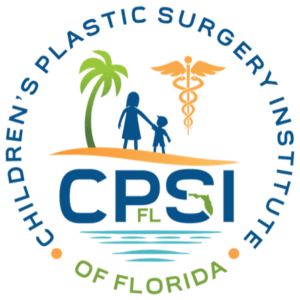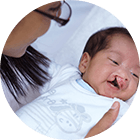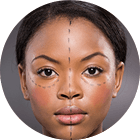Actinic Keratosis
Introduction
Actinic keratosis (AK) is a pre-cancerous skin condition that develops after exposure to ultraviolet rays from the sun. The lesions look like scaly or crusty warts that typically appear on the face or back of the hands. Actinic keratosis lesions may become pink or red. An estimated 10% of cases become cancerous lesions called squamous cell carcinomas (SCC) or basal cell carcinomas (BCC). As much as 40%-60% of all SCCs begin as AK lesions.
People who are prone to sun damage and skin cancer are also prone to actinic keratosis. This includes people with a fair complexion, blonde or red hair, and light eyes. The risk of actinic keratosis increases the closer you live to the equator.
Anatomy
Actinic keratoses can develop on any part of the skin that is exposed to the sun. The face and backs of the hands are the most common. Other common sites include the head, ears, lips, and shoulders. A small, raised bump that is rough and sometimes itchy or swollen may be a sign of AK.
Causes
The cause of most actinic keratoses is too much sun exposure during a lifetime. The exposure to UV light in tanning beds may be even more dangerous than sunlight. In rare cases, too much exposure to x-rays or certain industrial chemicals can cause pre-cancerous skin lesions.
Actinic keratoses are most common in people who are over 50 years old. People with a weak immune system are also at risk.
Symptoms
If you notice an unusual growth on your skin, or a growth that changes in any way, you should see a doctor right away. AKs generally take years to develop, but some younger people (20s) can get them.
Typical characteristics of an actinic keratosis lesion include:
- Rough or crusty, round bump on the skin, similar to a wart
- Size ranges from an eighth of an inch to a quarter inch in diameter
- May be red, pink, brown, or flesh colored
- Occasional itching or tenderness
- Swelling around the lesion, sometimes with bleeding
Diagnosis
AK lesions can be diagnosed by a dermatologist by visual examination. If the doctor suspects the lesion may be cancerous, a skin biopsy can be done in the office.
Treatment
Many treatment options exist for actinic keratosis lesions, depending on your age, health, and the lesion itself.
When there are only a few lesions to treat, cryotherapy is the most common treatment option. It is a simple, in-office procedure that uses liquid nitrogen to freeze the growth, which kills the cells and stops it from getting any worse.
When there are many AKs, a topical medication is used. This treatment can also be combined with other forms of treatment, such as photodynamic therapy (PDT). A strong blue or red light is applied along with a topical (photosensitizing) agent to target and kill AK cells while preserving surrounding healthy tissue. Other combination therapies include laser treatment and chemical peels. Some of these treatment options may be repeated every 3, 6, or 12 months under the direction of a dermatologist.
If the lesion appears pre-cancerous, a dermatologist can perform a biopsy by collecting some of the AK tissue.
Prevention
Because AK is caused by sun damage and UV exposure, the best way to prevent these pre-cancerous lesions is to protect yourself from the sun, and do not use tanning beds. Avoid getting sun burned by using proper sun protection.
See a dermatologist once a year for a professional skin check, and do a self-check at home once a month. If you notice any new or changing marks on your skin, see a doctor.

Copyright © - iHealthSpot Interactive - www.iHealthSpot.com
This information is intended for educational and informational purposes only. It should not be used in place of an individual consultation or examination or replace the advice of your health care professional and should not be relied upon to determine diagnosis or course of treatment.
The iHealthSpot patient education library was written collaboratively by the iHealthSpot editorial team which includes Senior Medical Authors Dr. Mary Car-Blanchard, OTD/OTR/L and Valerie K. Clark, and the following editorial advisors: Steve Meadows, MD, Ernie F. Soto, DDS, Ronald J. Glatzer, MD, Jonathan Rosenberg, MD, Christopher M. Nolte, MD, David Applebaum, MD, Jonathan M. Tarrash, MD, and Paula Soto, RN/BSN. This content complies with the HONcode standard for trustworthy health information. The library commenced development on September 1, 2005 with the latest update/addition on February 16, 2022. For information on iHealthSpot’s other services including medical website design, visit www.iHealthSpot.com.















